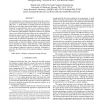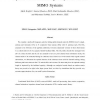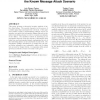18 search results - page 3 / 4 » Cooperative Spectrum Sensing Using Random Matrix Theory |
GLOBECOM
2008
IEEE
13 years 11 months ago
2008
IEEE
— We consider beamforming in a cognitive network with multiple primary users and secondary users sharing the same spectrum. In particular, we assume that each secondary transmitt...
IJCAI
1989
13 years 6 months ago
1989
This paper considers the Valiant framework as it is applied to the task of learning logical concepts from random examples. It is argued that the current interpretation of this Val...
ICASSP
2008
IEEE
13 years 11 months ago
2008
IEEE
The emerging theory of compressed sensing (CS) provides a universal signal detection approach for sparse signals at sub-Nyquist sampling rates. A small number of random projection...
CORR
2011
Springer
13 years 8 days ago
2011
Springer
We consider a multi-cell frequency-selective fading uplink channel (network MIMO) from K singleantenna user terminals (UTs) to B cooperative base stations (BSs) with M antennas ea...
MMSEC
2006
ACM
13 years 11 months ago
2006
ACM
This paper presents a theoretical security analysis of lattice data hiding. The security depends on the secrecy of a dither signal that randomizes the codebook. If the same secret...



